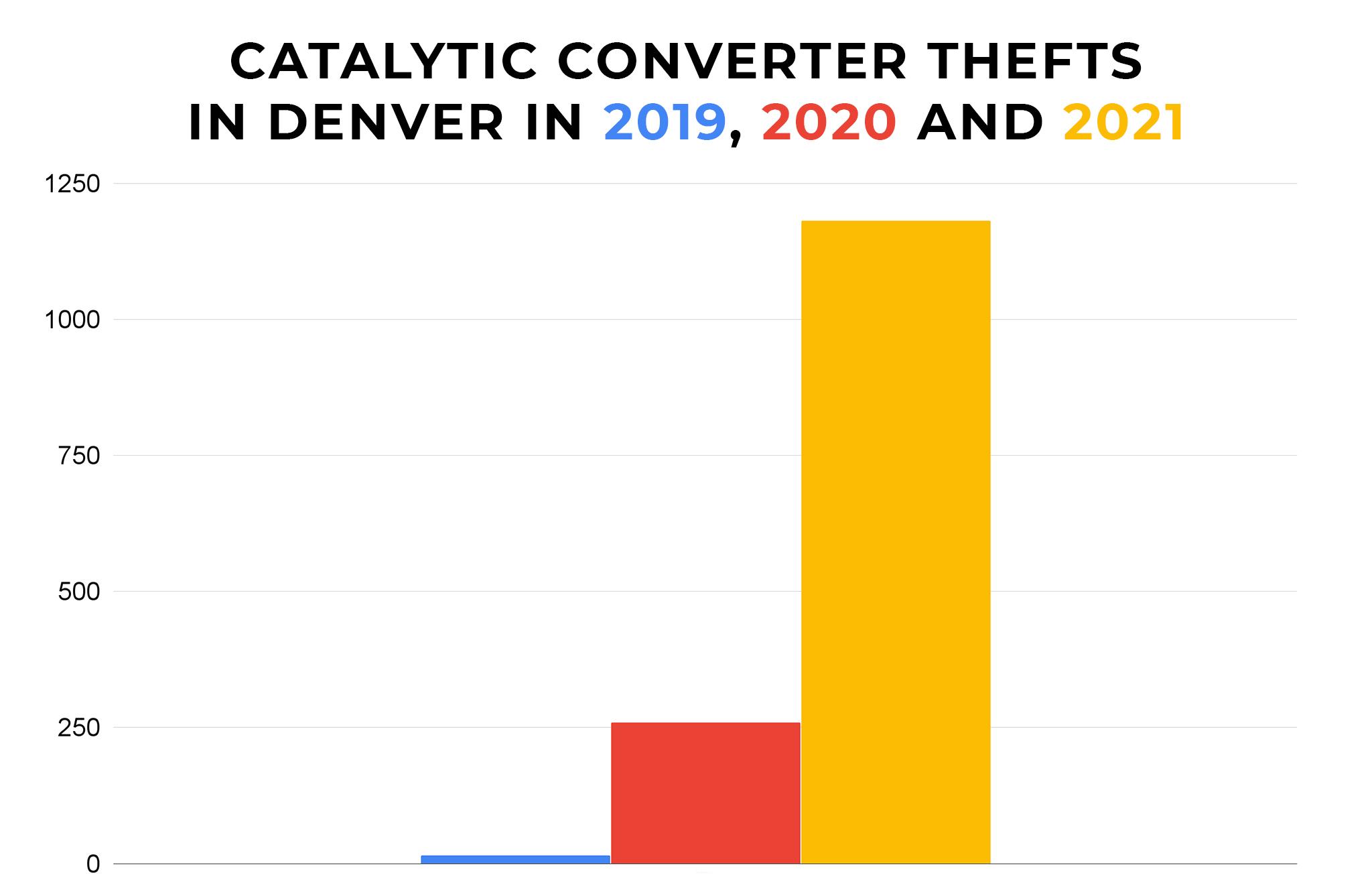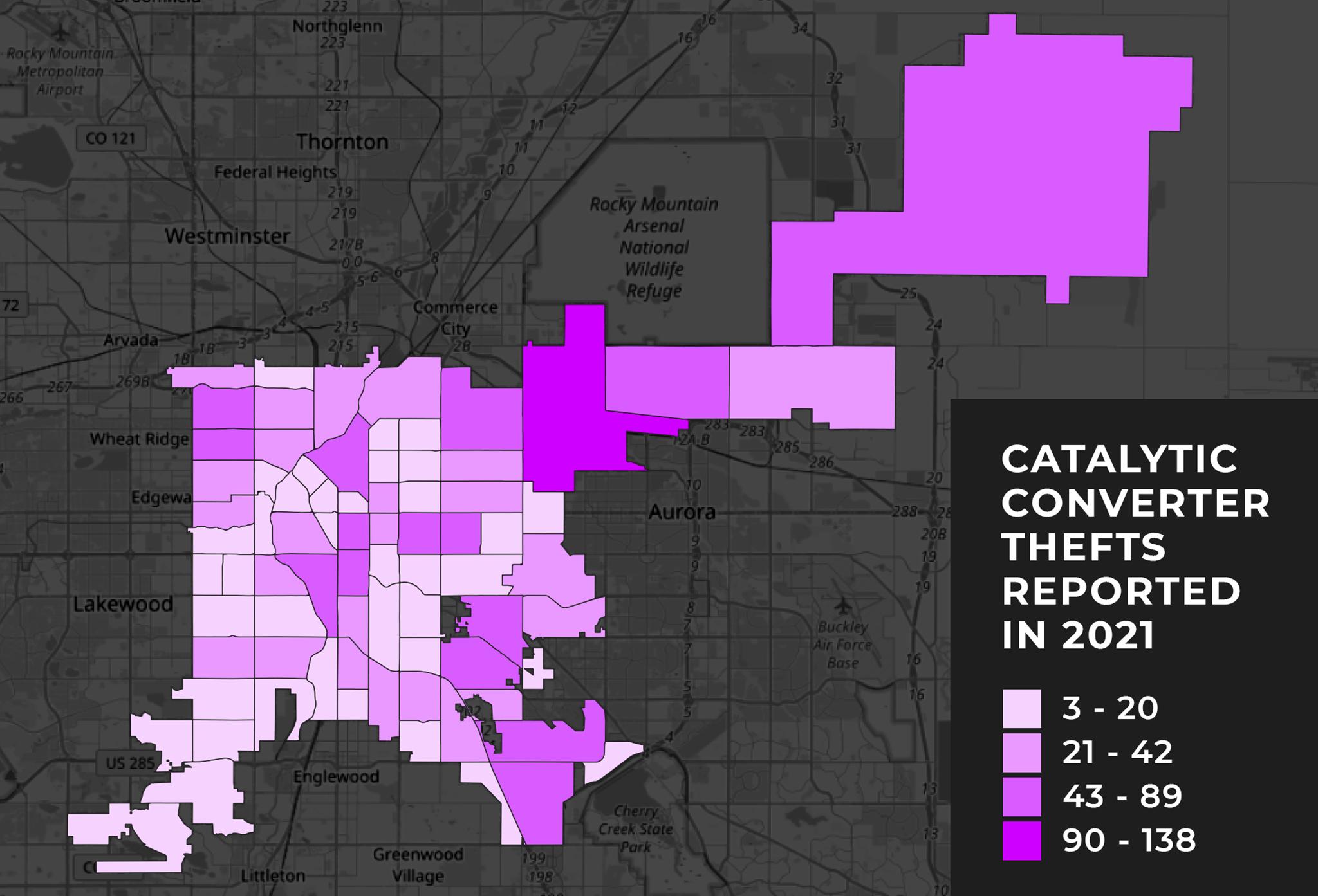Most drivers are worried about the items in their car being stolen, or maybe their license plate or tires but converters are one of the easiest parts to steal from a vehicle. And the fastest. A thief with a battery operated Sawzall could remove a converter in less than a minute. But recently, they've been increasingly worried about the steep rise in thefts of catalytic converters.
On Monday, City Council approved an ordinance that would require more vetting of converter sales for sellers and buyers.
Under the ordinance, which amends the city's municipal code, auto part shops and scrap yards must ask converter sellers for a valid photo ID. The shops must document the ID, photograph the converter and report the sale to Denver police within one business day.
The goal is to track who is selling and purchasing converters, giving authorities a way to monitor trends and suspects.
Converter thefts in Denver began to increase in 2020, going from about 14 in 2019 to 262 in 2020, according to DPD data.
The numbers exploded in 2021. About 2,679 catalytic converters were stolen in 2021, an 899.6% increase over 2020.

So far this year, thefts are on pace to break last year's record. It's not only a Denver problem. Numbers have increased on the state and national levels.
According to the National Insurance Crime Bureau, a nonprofit focusing on vehicle insurance fraud and crime, converter theft claims increased dramatically nationwide, going from 3,389 thefts with a claim in 2019 to 14,433 in 2020, a 325% increase.
In June, Gov. Jared Polis signed two bills aimed at reducing thefts across the state. Senate Bill 9 requires junkyard workers log all transactions involving catalytic converters and report the transactions to the national motor vehicle title information system within 5 days. House Bill 1217 created an annual $300,000 grant program to raise awareness of catalytic converter theft.

Converters look like small mufflers and they clean fumes coming from the exhaust, so the emitted gasses, such as carbon monoxide, come out at more environmentally safe levels. They're made with precious metals, such as platinum, palladium and rhodium, which makes converters valuable. The price of these precious metals have increased since the beginning of the pandemic. On average, a converter sells for about $250 to $500 but they can go for at least $1,500 if they're stolen from a hybrid car, like a Toyota Prius. Drivers also can't tell their converters have been stolen until the car is turned on and they hear a loud roaring sound. The sound will grow louder when the gas pedal is pressed.
According to the NICB, large vehicles such as pickups and delivery trucks are bigger targets because they have a higher clearance, making it easier to access the converters. Toyota Priuses and other hybrid vehicles are also high on the list because they tend to be less corroded and some hybrid vehicles have two converters.
DPD said the vehicles that see the most theft are Honda, Toyota, Ford, Jeep and Chevrolet. They are also mostly taken from parking lots at residential lots, RTD lots and Denver International Airport lots.

DPD has previously offered several methods to combat converter theft, including hosting events for residents to get their converters etched with their VIN numbers. DPD said residents can head to a mechanic to get similar etching or get their converter spray painted. The markings work like a registration system and can make finding the converter easier if it's stolen.
Some mechanics can also weld the converter to the vehicle if it's attached by bolts or put cages around them.
Correction: The chart in this story initially showed the wrong data.












